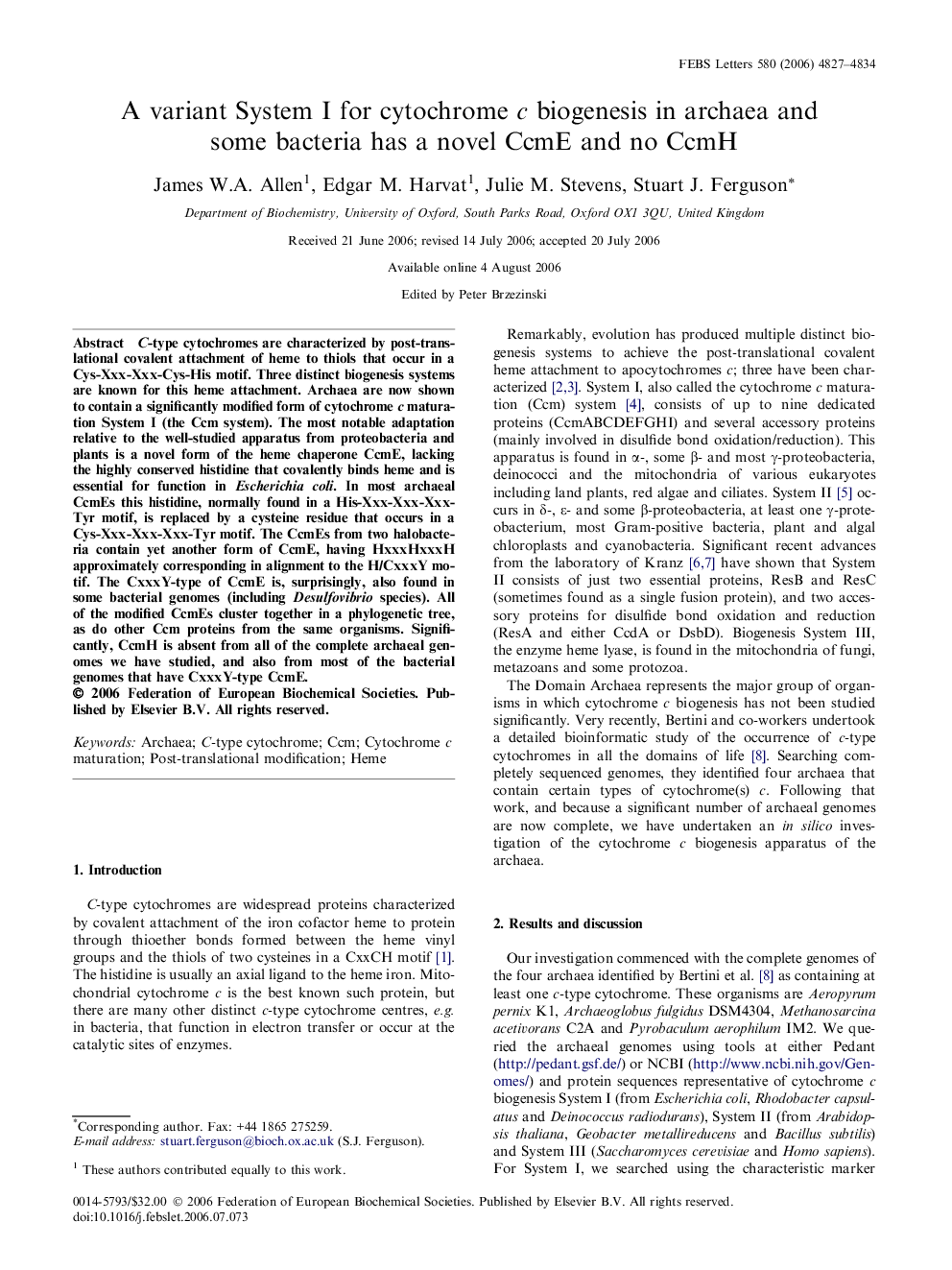| Article ID | Journal | Published Year | Pages | File Type |
|---|---|---|---|---|
| 2052480 | FEBS Letters | 2006 | 8 Pages |
C-type cytochromes are characterized by post-translational covalent attachment of heme to thiols that occur in a Cys-Xxx-Xxx-Cys-His motif. Three distinct biogenesis systems are known for this heme attachment. Archaea are now shown to contain a significantly modified form of cytochrome c maturation System I (the Ccm system). The most notable adaptation relative to the well-studied apparatus from proteobacteria and plants is a novel form of the heme chaperone CcmE, lacking the highly conserved histidine that covalently binds heme and is essential for function in Escherichia coli. In most archaeal CcmEs this histidine, normally found in a His-Xxx-Xxx-Xxx-Tyr motif, is replaced by a cysteine residue that occurs in a Cys-Xxx-Xxx-Xxx-Tyr motif. The CcmEs from two halobacteria contain yet another form of CcmE, having HxxxHxxxH approximately corresponding in alignment to the H/CxxxY motif. The CxxxY-type of CcmE is, surprisingly, also found in some bacterial genomes (including Desulfovibrio species). All of the modified CcmEs cluster together in a phylogenetic tree, as do other Ccm proteins from the same organisms. Significantly, CcmH is absent from all of the complete archaeal genomes we have studied, and also from most of the bacterial genomes that have CxxxY-type CcmE.
